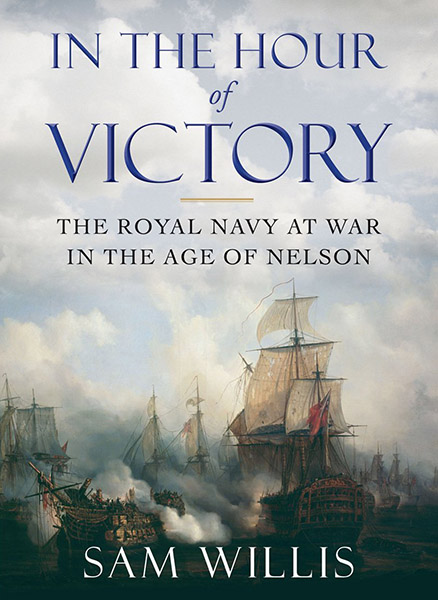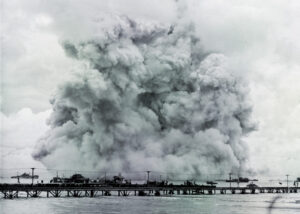
In the Hour of Victory
The Royal Navy at War in the Age of Nelson
By Sam Willis. 416 pages. W. W. Norton, 2014. $35.00.
Reviewed by Anthony Brandt
THIS BIG HANDSOME BOOK grew out of naval historian Sam Willis’s discovery in the British Library of a forgotten national treasure—a bound collection of original dispatches sent by commanders in the Napoleonic Wars. The dispatches describe action in seven great naval battles that together gave the Royal Navy command of the seas. For each battle Willis has reprinted the most revealing of the dispatches and surrounded them with his explanations and commentaries. The result is quite wonderful—a naval history of the Napoleonic Wars and its highlights; excellent accounts of Royal Navy battle tactics; ample illustrations; incisive portraits of the individuals involved; and an insightful look at the role that chance plays in warfare.
Willis places the battles in their larger historical context. We find out, for example, that one advantage the Royal Navy had over its enemies was the superb gunnery training in the ranks. At the Battle of Cape St. Vincent, British gunners fired into enemy Spanish ships five times for every one time they were fired upon. We also learn that the Jacobin fanaticism of the French Revolution stripped the French Navy of most of its experienced officers, who, by the old laws, had been required to be aristocrats. When Richard Howe destroyed the French fleet at the Glorious First of June in 1794, he was fighting inexperienced commanders new to naval warfare. They fought hard but not well.
Horatio Nelson figures largely throughout, of course, but so do Cuthbert Collingwood, John Jervis, Howe, James Saumerez, and the rest—some heroic, some not. Nelson stands out not only for his courage and talent but also for his determination to win the publicity battle. His ability to write an entertaining and highly readable account of his own actions had much to do with his subsequent fame. As to the political maneuvering among these self-important warriors for preferment and peerages inside the Admiralty, Willis gives that the dry once-over it deserves.
In the end, what impressed me most from reading this newly discovered trove of information was the incredible mayhem and destruction those massively armed floating behemoths wreaked on each other. It’s hard to see how anyone could have survived repeated broadsides, large splinters flying everywhere inside a gun deck, top decks raked with grape shot. In one battle a splinter tore the lining of Nelson’s abdomen. Pushing his bulging intestines back inside his body, he fought on. It gives new meaning to the expression “guts and glory.”
Anthony Brandt has written for many national magazines and is the editor of the National Geographic Society’s edition of the journals of Lewis and Clark. His most recent book is The Man Who Ate His Boots: The Tragic History of the Search for the Northwest Passage.

.jpg)



